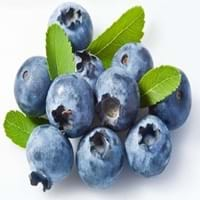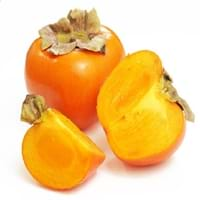Health Benefits
Cancer prevention, Cures gastro-intestinal troubles, Improves night vision, Improves stomach health, Prevents diabetes, Prevents high blood pressure, Reduces blood circulation problems
Anti-oxidant properties, Beneficial in curing fever, Cancer prevention, Heart care, Reduces nervous tension
General Benefits
Fights against infections, Helps in weight loss, Prevents blood clotting in vessels, Treatment of urinary tract infections
Anti-inflammatory properties, Boosts immune system, Controls blood pressure, Digestive aid, Eye care, Fights against infections, Helps in weight loss, Improves blood circulation
Skin Benefits
Anti-aging benefits, Nourishes skin, Protects against skin damage
Anti-aging benefits, Brightens and lightens complexion, Reduces wrinkles
Hair Benefits
Prevents hair loss
Good conditioner, Promotes longer and healthier hair, Treatment of dandruff
Allergy Symptoms
Not Available
Abdominal pains, Anaphylaxis, Inflammation
Side Effects
Decrease in blood sugar levels, Diarrhoea, Dizziness, Headache, Internal bleeding, Stomach pain
Affects blood glucose levels, Decrease in blood sugar levels, Coagulation
Best Time to Eat
As a snack in the late afternoon, Don't consume at night and before bed, Eat the fresh ones, avoid mixing with any other foods, don't eat after meal., Morning time (before lunch)
Along with meal, As a snack in the late afternoon, Don't consume at night and before bed, Eat the fresh ones, avoid mixing with any other foods, don't eat after meal.
Vitamin A (Retinol)
Not Available
Vitamin B1 (Thiamin)
Not Available
Vitamin B2 (Riboflavin)
Not Available
Vitamin B3 (Niacin)
Not Available
Vitamin B5 (Pantothenic Acid)
Not Available
Vitamin B6 (Pyridoxin)
Not Available
Vitamin B9 (Folic acid)
Not Available
Vitamin C (Ascorbic Acid)
Vitamin E (Tocopherole)
Not Available
Vitamin K (Phyllochinone)
Not Available
Lutein+Zeaxanthin
Not Available
Calories in Fresh Fruit with Peel
Calories in Fresh Fruit without Peel
Not Available
Not Available
Calories in Frozen Form
Not Available
Not Available
Calories in Dried Form
Not Available
Calories in Canned Form
Not Available
Not Available
Type
Berry
Berry, Tree fruit
Season
Summer
Autumn, Winter
Varieties
Dwarf bilberry, Piper, bog blueberry, Northern bilberry, Mountain bilberry and Oval-leaved bilberry
Early Golden, John Rick, Miller, Woolbright and Ennis
Color
Dark purple
Orange, Red, Yellow
Inside Color
Light Green
Yellow
Origin
Unknown
Eastern United States
Soil Type
Moist, Well-aerated
Sandy loam, Well-drained
Climatic Conditions
Cold
Can tolerate wide range of climates, Sunny
Facts about
- Bilberries are used in manufacturing of alcoholic drinks.
- They are used to improve aromas of sorbets.
- The green extract of it's leaves is used in textile industry as natural dye.
- It is said that formation of seeds inside the persimmon fruit shows what type of winter is coming(type of snow).
- There are about 2000 varieties of this fruit.
- The American persimmon has another name 'Possumwood'.
Other Countries
Denmark, Finland, Iceland, Sweden
Azerbaijan, Brazil, Costa Rica, Japan, Korea, Pakistan
Top Importer
United States of America
United States of America
Top Exporter
Chile
United States of America
Botanical Name
Vaccinium myrtillus
Diospyros virginiana
Synonym
blaeberry, whinberry, European blueberry, whortleberry
Not Available
Subkingdom
Tracheobionta
Tracheobionta
Division
Magnoliophyta
Magnoliophyta
Class
Magnoliopsida
Magnoliopsida
Subclass
Dillenhidae
Dillenhidae
Family
Ericaceae
Ebenaceae
Genus
Vaccinium
Diospyros
Species
Vaccinium myrtillus
D. virginiana
Generic Group
Heath
Not Available
Difference Between Bilberry and American Persimmon
We might think that Bilberry and American Persimmon are similar with respect to nutritional value and health benefits. But the nutrient content of both fruits is different. Bilberry and American Persimmon Facts such as their taste, shape, color, and size are also distinct. The difference between Bilberry and American Persimmon is explained here.
The amount of calories in 100 gm of fresh Bilberry and American Persimmon with peel is 44.00 kcal and 127.00 kcal and the amount of calories without peel is Not Available and Not Available respectively. Thus, Bilberry and American Persimmon belong to and category.These fruits might or might not differ with respect to their scientific classification. The order of Bilberry and American Persimmon is Ericales and Ericales respectively. Bilberry belongs to Ericaceae family and American Persimmon belongs to Ebenaceae family. Bilberry belongs to Vaccinium genus of Vaccinium myrtillus species and American Persimmon belongs to Diospyros genus of D. virginiana species. Beings plants, both fruits belong to Plantae Kingdom.









